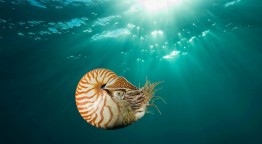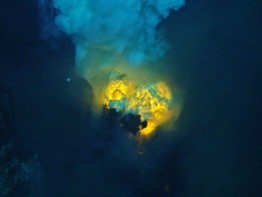A mere glass full of water from Monterey Bay Aquarium’s 1.2 million-gallon Open Sea tank, among the 10 largest aquariums in the world, is all scientists really needed to identify the Pacific Bluefin tuna, dolphinfish and most of the other 13,000 fish swimming there. Researchers also for the first time used DNA from water samples to discern which of the species were most plentiful in the tank.
Read more »El Nino tied to melting of Antarctica’s Pine Island Glacier
Many glaciers flowing from the land to the coast eventually float over the ocean and melt. The speed at which that melting occurs can depend on many factors, including the warmth of the water beneath it. In Antarctica the Pine Island Glacier drives large amounts of ice into the ocean, and for decades the glacier’s tip has been thinning. College of the Environment scientists and their partners have connected the dots behind the complex drivers that explain why we are seeing this phenomenon occur.
Read more »Loving the chambered nautilus to death
It is a living fossil whose ancestors go back a half billion years—to the early days of complex life on the planet, when the land was barren and the seas were warm. Naturalists have long marveled at its shell. The logarithmic spiral echoes the curved arms of hurricanes and distant galaxies. In Florence, the Medicis turned the pearly shells into ornate cups and pitchers adorned with gold and rubies.
Read more at The New York Times »Fiery volcano offers geologic glimpse into land that time forgot — with video
The first scientists to witness exploding rock and molten lava from a deep sea volcano, seen during a 2009 expedition, report that the eruption was near a tear in the Earth’s crust that is mimicking the birth of a subduction zone. Scientists on the expedition collected boninite, a rare, chemically distinct lava that accompanies the formation of Earths subduction zones. Nobody has ever collected fresh boninite and scientists never had the opportunity to monitor its eruption before, said Joseph Resing, University of Washington oceanographer and lead author of an online article on the findings in Nature Geoscience.
Read more at UW Today »




